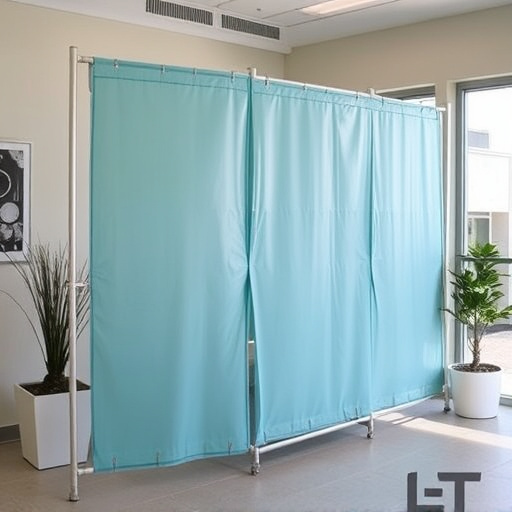In automotive engineering, addressing heat soak vulnerabilities is crucial for enhancing engine performance and safety. This text compares two cooling strategies: Cold Air Intake (CAI) and Short Ram Intake (SRI). CAI systems draw in cooler external air, bypassing hot compartment air, to lower intake temperatures and improve combustion, outperforming SRI which offers minimal temperature reduction. Case studies highlight the importance of understanding heat soak vulnerabilities through real-world scenarios, where effective mitigation strategies like strategic intake placement and regular maintenance significantly enhance engine performance and longevity.
In the realm of automotive performance, understanding heat soak vulnerability differences between cooling systems is paramount. This article delves into the core contrast between two popular intake types: Cold Air Intake (CAI) and Short Ram Intake (SRI). We explore how these designs vary in terms of temperature impact on engine performance, with real-world case studies highlighting potential pitfalls and best practices for mitigation. By examining these key differences, folks can make informed decisions to optimize their vehicles’ capabilities.
- Heat Soak Vulnerability: Cold Air Intake vs Short Ram Intake – Understanding the Basics
- How These Intakes Differ in Terms of Heat Impact and Performance
- Exploring Real-World Scenarios: Case Studies and Best Practices for Mitigation
Heat Soak Vulnerability: Cold Air Intake vs Short Ram Intake – Understanding the Basics

In the realm of automotive engineering, understanding heat soak vulnerabilities is paramount for optimizing engine performance and safety. Heat soak refers to the phenomenon where an engine retains excess heat after operation, leading to reduced efficiency and potential damage. Among various cooling strategies, cold air intake (CAI) and short ram intake (SRI) systems differ significantly in their approaches to mitigating heat soak.
Cold air intake systems are designed to draw in cooler air from outside the engine compartment, bypassing the hot air that accumulates within. This direct path of cold air ensures lower intake temperatures, which can enhance fuel combustion and improve overall engine performance. Conversely, short ram intake systems modify the stock air intake design by reducing the length of the air ducting. While this may provide a weight savings and improve airflow under certain conditions, it does not significantly lower the intake temperature compared to CAI systems. In terms of heat soak vulnerability, cold air intakes generally outperform short ram intakes due to their ability to deliver colder, denser air directly to the engine, thereby minimizing the impact of heat retention.
How These Intakes Differ in Terms of Heat Impact and Performance

Cold air intakes and short ram intakes (SRI) differ significantly in terms of their heat impact and overall performance. Cold air intakes are designed to draw in colder, denser air from outside the vehicle, which can enhance combustion and increase power output. This is particularly beneficial for vehicles operating at high altitudes or in cold climates, where the external air temperature is lower. By bringing in cooler air, these intakes ensure a more efficient burn of fuel, resulting in improved horsepower and torque figures.
In contrast, short ram intakes typically do not offer the same level of temperature control as their colder counterparts. SRI systems usually reroute exhaust gases to create a shorter intake path, reducing backpressure within the engine bay. While this can lead to quicker acceleration and smoother throttle response, the air drawn in is often at or near ambient temperature. This means that during hot conditions, the air may not be as cool as it would be with a cold air intake, potentially limiting the power gains in certain scenarios.
Exploring Real-World Scenarios: Case Studies and Best Practices for Mitigation

In exploring real-world scenarios, case studies play a pivotal role in understanding heat soak vulnerabilities. By examining specific instances where vehicles or systems have been affected, engineers and enthusiasts gain valuable insights into the root causes and potential solutions. For instance, comparing engines equipped with cold air intakes to those with short ram intakes reveals contrasting behaviors under extreme conditions. Cold air intakes, by drawing air from outside the vehicle, maintain lower temperatures, reducing the risk of heat soak. Conversely, short ram intakes, relying on recycled air, can lead to rapid temperature rise due to the concentrated heat from the engine compartment.
Best practices for mitigation include strategic placement of intake systems and regular maintenance routines. In high-performance vehicles or those operating in hot climates, engineers recommend longer cold air intake runs to ensure a steady supply of cooler air. Additionally, periodic cleaning and filtering can prevent debris buildup that may obstruct airflow, exacerbating heat soak issues. These practical approaches, backed by real-world data, offer effective countermeasures against heat soak vulnerabilities, enhancing both engine performance and longevity.
In examining the contrast between cold air intakes and short ram intakes, it’s evident that each has distinct impacts on engine performance and heat soak vulnerability. Cold air intakes excel in drawing in cooler air from external sources, enhancing efficiency and power output. Conversely, short ram intakes prioritize rapid airflow, often leading to higher heat absorption but maintaining swift cooling for optimal performance under extreme conditions. Understanding these differences is key to making informed decisions when modifying vehicles. By considering real-world scenarios and implementing best practices, enthusiasts can mitigate heat soak vulnerabilities, ensuring their chosen intake system supports both powerful performance and reliable engine longevity.














